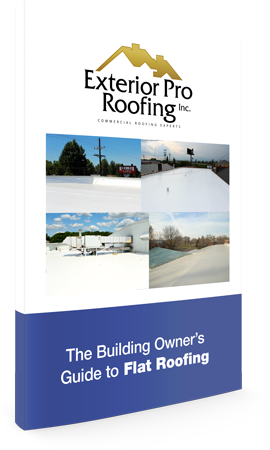Recovering your existing flat roof with a PVC membrane may be the best way to stop frustrating roof leaks without spending a fortune on flat roof repair. The PVC flat roof recovery system saves the cost of a full tear off, comes with either a 15 or 20 year warranty, and has a complete line of accessories like HVAC curbs, stack flashings, pitch pans, and even roof vents so the system can breath. The installation process is simple, quick and clean. It does not require any loud equipment, dangerous chemicals, or cause disruption to the building's activities.
Read more about how it works then you decide if its a flat roof repair option worth exploring more.
Step One: Taking Core Samples
The first step in a flat roof recovery is to verify that the existing roof is not wet or saturated with moisture. This is done by taking core samples of the existing roof down to the roof deck. The core sample can tell us more than just if the roof is saturated or not, it also tells how thick the existing roofing is, how much roof insulation is on the building, and how many layers of roofing there are if more than one.
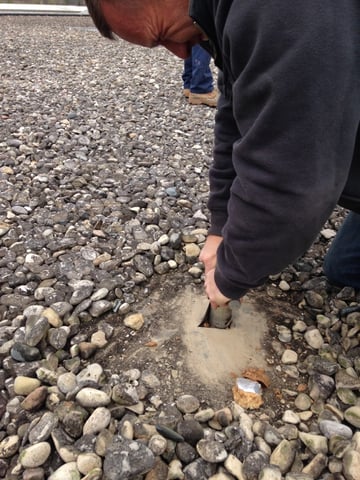
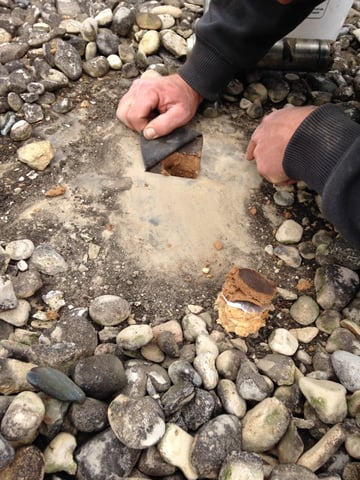
Step Two: Choose a Recovery Board
A recovery board is the material that will separate the old roofing from the new. It can be a ridged 1/2 board great for heavy foot traffic and or solar panels, it can be a more flexible insulation board designed to recovery tar and gravel roofs, or it can be a simple slip sheet that will keep one membrane off of another. The selection of recovery board should be based on the roofs intended use. The most common recovery board used is either 1/2” or 1” roof insulation, not only does it serve to separate the old roof from the new you also get some added continuos R-value to the building.
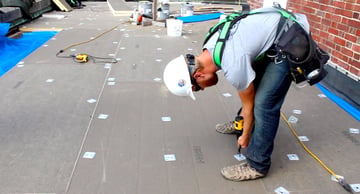
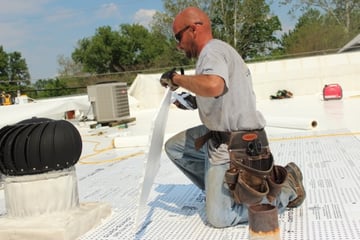
Step Three: Remove Old Flashings
The old flashings are removed so that new flashing around HVAC units, plumbing pipes, and gas lines fit snugly and are terminated directly to the curb or pipe they are going around. One great piece of the flat roof recovery system is that the flashings are not one size fits all but they are custom sized to get the best fit and function possible.
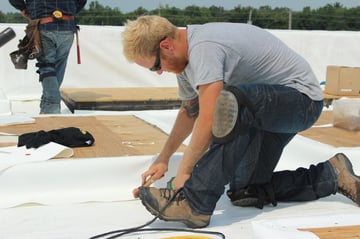
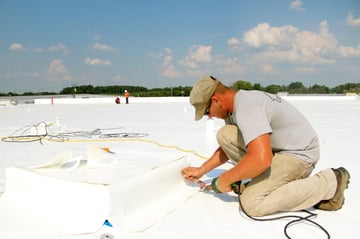
Step Four: Install The New Membrane
Once the recovery board is laid out and installed and the old flashings have been removed the membrane can begin to be installed. The new PVC membrane can come either in 5’ rolls or in larger pre fabricated sheets. The rolls are better for smaller flat roofs with many HVAC curbs, pipes, gas lines, drains, and grease vents like restaurants and certain manufacturing facilities but the larger pre fabricated sheets are better for larger and more open flat roofs.
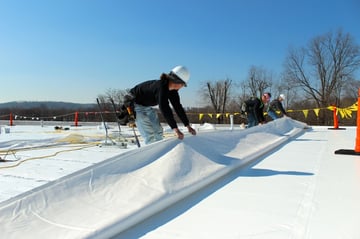
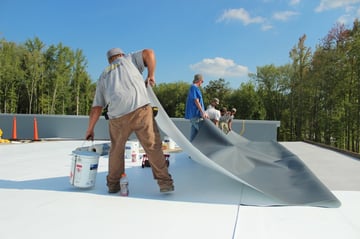
Step Five: Install New Flashing
After the new white membrane has been installed its time for the new flashings including the wall flashings. Wall flashings are designed to cover the entire wall and go “up and over “ sealing even the wall cap. Next HVAC curbs are installed and terminated, plumbing pipe flashings are put on and roof drains are flashed in.
Step Six: Hot Air Welding The Seams
One of the most crucial parts to any flat roofing system is how the pieces and parts are seamed together. The PVC flat roof recovery system is seamed together by means of a hot air weld or hot air seam. Hot air welding is done by two ways, either a hand welder or automated walk behind welder but the concept is the same. Hot air is blown between the two pieces of PVC and compressed with a roller. The heat briefly changes the solid PVC material into a liquid and the pressure of the roller pushes and blends the melted material together. As soon as the heat is removed the blended PVC material cools off and returns into a solid and the two pieces of PVC roofing material are now one piece or monolithic. It takes less than 10 seconds for a hot air weld to cool off and reach full strength. The PVC material welds somewhere between 250 and 300 degrees Fahrenheit.
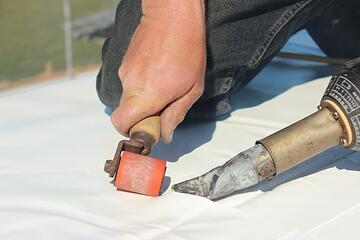

Step 7: Install Metal Trims
The PVC Flat roof recovery system works great with either a full coping cap or a half coping. The metal trims on the outside of a building not only protect the wall and keep water from entering from the top but the metal looks great and adds curb appeal to any building. Metal trims come in 35 different colors to match just about any type of facade or color scheme.

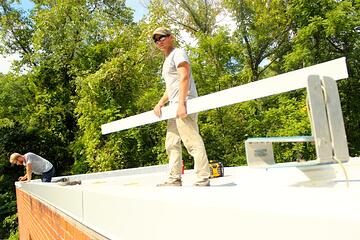
Step 8: Pull The Welds And Clean Up The Job Site
After the new membrane is down, flashings installed, and metal trims in place it’s time to “pull” the welds. All of the hot air welds are probed to ensure a permanent water tight seal was created. Any lifts or openings in the seams that are found are fixed at this time. The goal is for the welder to create an 1 1/2” thick weld along the seams. Loose debris, like the old cardboard tubes and the membrane, were shipped on and the plastic wrappers are cleaned up and the flat roof recovery job is compete.
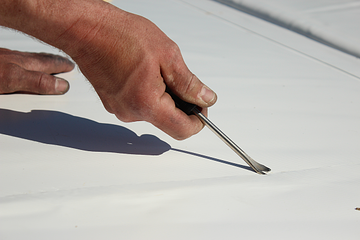
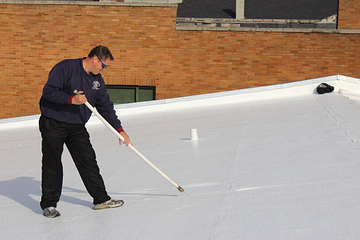
A PVC recovery system makes flat roof repair simple, quick, and effective.


